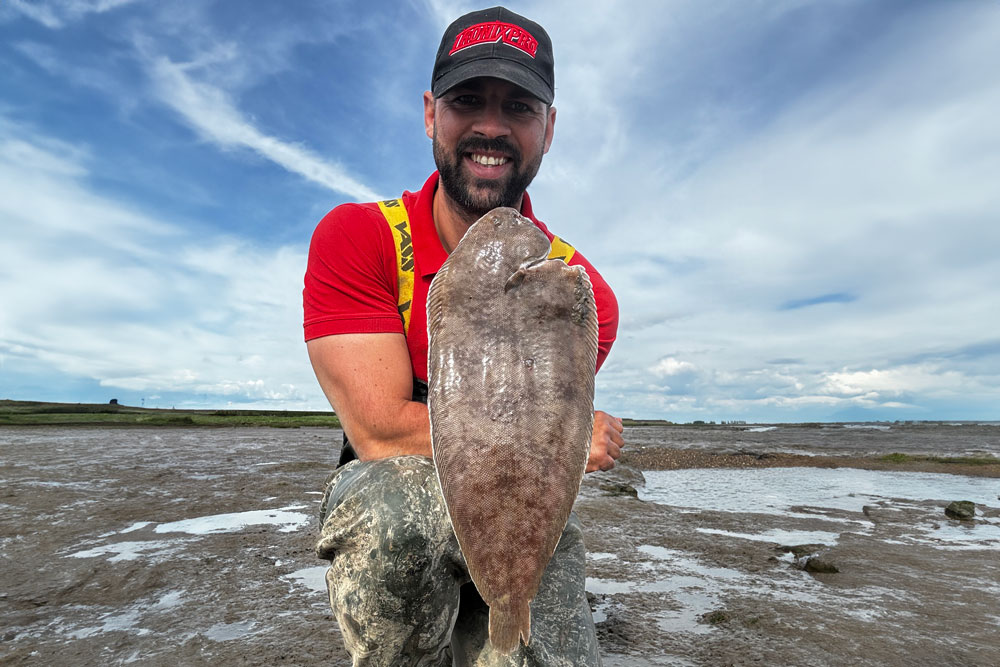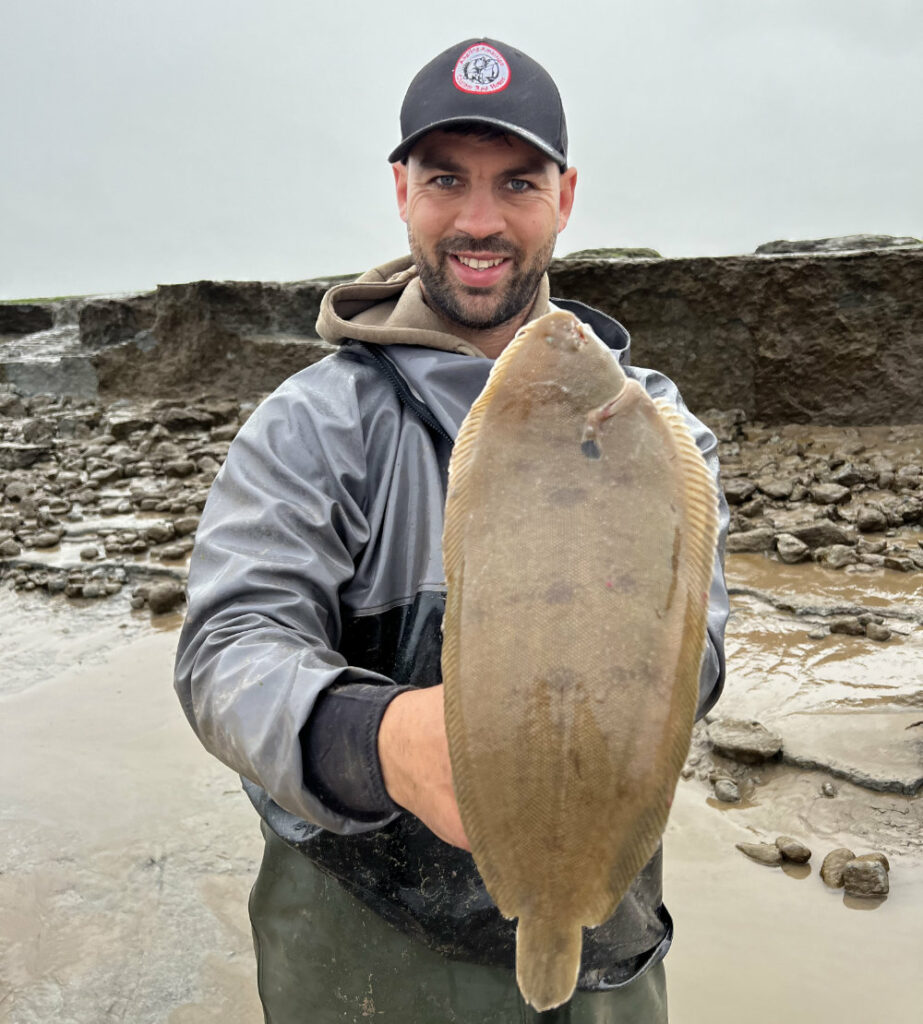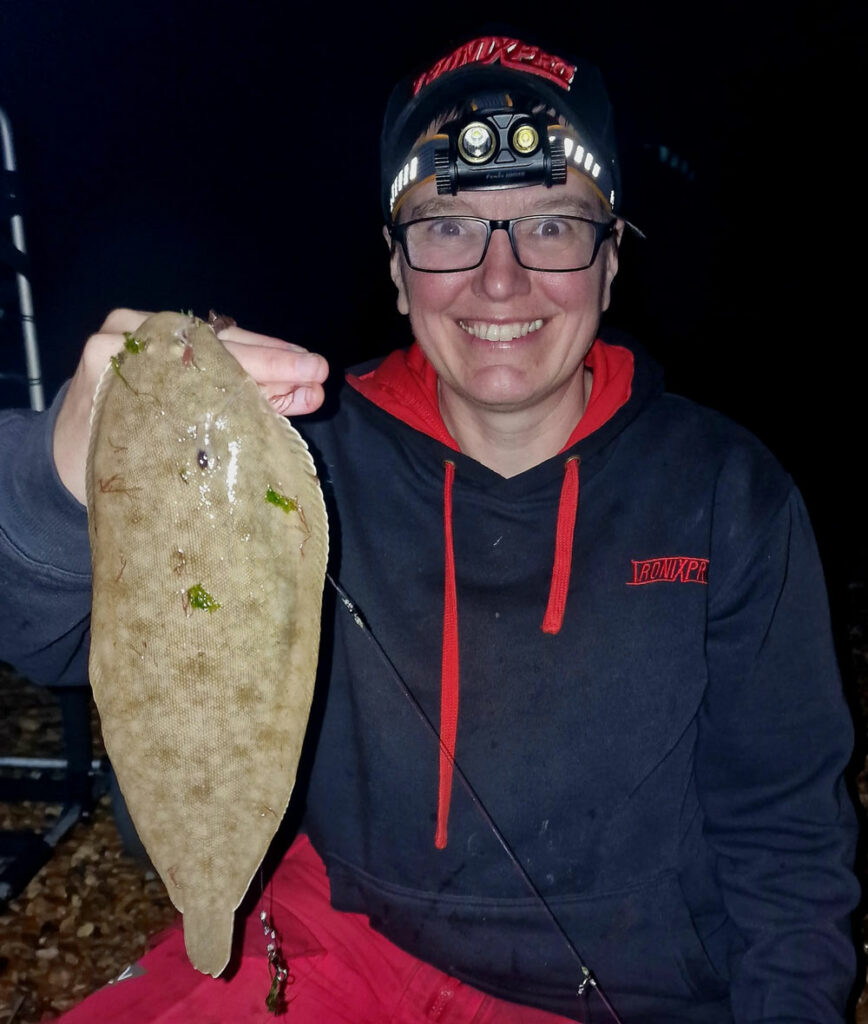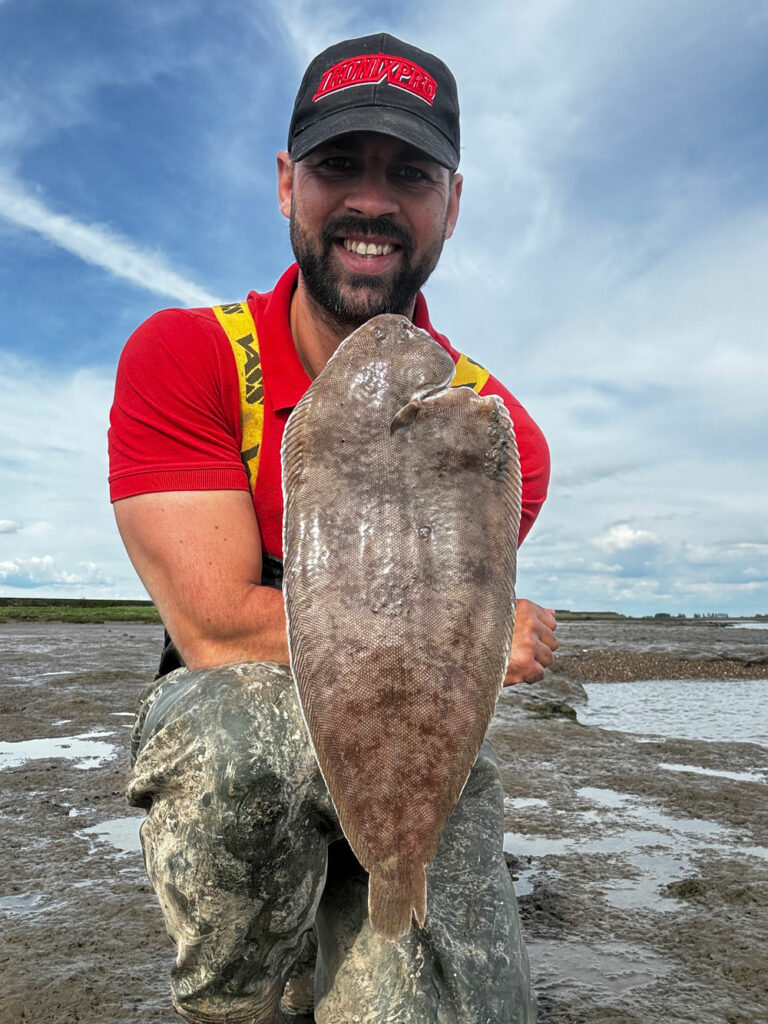Sole are often thought of as a specialist anglers fish. Certainly, they require a more targeted approach using rigs specifically designed to compliment their small mouths, but often the hardest part of sole fishing is actually finding them. They are prone to being found on specific relatively small areas of a beach or estuary environment yet rarely seen just a few hundred yards away.

Season
The season for sole runs from roughly June to November. The peak months are typically late July, August and September, though October can produce some of the biggest individual sole, especially from open beaches. They will also show in November, though periods of hard frosts and flood water entering the sea nearby will reduce their numbers quickly at this time.
Habitat
They favour estuary mouths, especially the deeper main channel where there are mussel beds and muddy/sandy ground. Loose broken ground with sand or mud patches are also good. Muddy harbours, especially the edges of main boat access channels, will also produce.
Natural parallel gullies that run along the length of the beach hold sole that work inwards with the flooding tide. They like areas close to scattered patches of stone or boulders surrounded by sand, and also favour the edge of the incline where the general seabed rises upwards over shingle on steep-to beaches.
Also note the very ends of wooden groynes where the tide washes out a deeper dish in the ground, as sole often sit here over the late flood tide and high water before moving out as the ebbing tide gets underway.

Weather and Tides
Look for periods of settled warm weather. Light seas with minimal swell and surf action tend to fish best. They will feed in seas still carrying colour after a gale as the seas calm off, too.
In coloured water, they can be caught even in bright daylight. However, they are classed as nocturnal feeders and in clearer seas expect the majority of bites to come in darkness.
In estuaries where the tide flow is fast, look to fish the smaller neap tides and maybe the middle-sized tides. Fish from low water to high water, though estuaries often produce their best sole in the first two hours of the flood and the hour and a half before high water when the flow is less. The outgoing tides are often poor, but might produce the odd fish.
Open beaches should be fished over the middle-sized and even the bigger spring tides. If you’re fishing at night, try to pick a tide that starts to flood in the dark. This makes a massive difference and brings the flatties close to shore quicker, maximising the productive time. There are beach marks that produce the odd sole during the outgoing ebb tide, but this is not so common as the sole tend to move out to deeper water quickly once the tide starts to retreat.
Tackle
Lighter beachcasters are ideal for this kind of fishing, offering good bite detection, as sole can be shy feeders. Go to rods from our range include the Competition Performance in both the two-piece and three-piece version. Also, the Xenon C-6 LD, Xenon Match and Banzai Match. The two-piece rods combine well with the Banzai Tournament Mono Mag loaded with 18lb Xenon Mainline and a 60lb Xenon Leader. The three-piece rods can be coupled with a Xenon C-6 or Banzai LC loaded with the same mono as the multiplier or, alternatively, 20lb Tronixpro X8 Probraid with a 60lb braid leader.
Specialist sole anglers often choose one of the modern multi-tip rods with three different insert tip options covering lead weights from 2 to 5 ozs or so. These tips are soft and can be pulled right over into a short curve to help highlight the shy bites. Many sole anglers have found the Banzai Multi-tip to be an ideal sole fishing rod.
46-inch long 2 or 3-hook rigs are very successful, but position the lowest hook length tight behind the lead link, one in the middle of the rig, and one 2-inches below the rig connector swivel.
The critical part of the rigs are the hook lengths. These need to be short, no more than 12-inches in calm weather, but between 8 and 10-inches long is the best compromise. Breaking strain should be between 15 and 20 lbs from Tronixpro Fluorocarbon. Fluorocarbon is heavier than the mono and helps keep baits tighter to the seabed and less prone to bouncing up off the seabed as waves and swell pass over the rig. Sole like a static anchored bait, not a moving one.
Equally critical are hook patterns and sizes. Sole have very small mouths, smaller than flounder of a similar size. A size 4 Tronixpro Aberdeen is the average hook size, but sometimes smaller baits on size 6 or even 8 Aberdeens will catch more fish. Sole are powerful and muscular, but sensible fishing with a size 6 or 8 hook won’t see any problems occur.
Use release grip wire leads to again restrict the movement of the bait and keep it close to the seabed.

Baits
Blow lug is an excellent bait for sole in all scenarios. Ragworm will also catch cut into small pieces, as will black lug. Snake white rag can be good on the open, shallower beaches. maddie rag is another good bait, especially over muddy bottoms inside estuaries. Small mussel baits also work well in some areas. In fact, if you can get the bigger horse mussel, several horse mussel tongues slid on to a small size 8 or 10 hook can be deadly when all other methods fail.
Keep baits small. Use just enough to fully fill the hook. Sole will cram bigger baits into their mouth, but this can give false bites and smaller baits are more easily eaten by the sole. A good system is to construct your baits using the Tronixpro Baiting Tool. Slide short sections of worm onto the prongs, then wrap with fine Tronixpro Baitex. Slide the bait off the prongs, and it’s ready to slide straight onto your hook. Sole can feed for short periods of time within the tide, so having spare baits ready to use is a big edge.
Tactics
Position your rod rest to face down the beach not facing the oncoming waves. Drop the rod tips as low as you can get them and again facing down the beach, so the tips are at 90-degrees to the sea. This helps maximise bite detection in light seas.
Given you’re fishing either a 3 or 2-hook rig, it’s best to have a slight amount of slack in the reel line, just by pulling 2 or 3-feet of line off the reel to create a slight bow. The slackness in the line puts all three baits on the seabed where the fish are feeding. Watch the line bow for lift bites in flat seas. These are animated and obvious compared to waves passing up the line. If there is some wave action, then tighten the line to the lead so that the rod tips curve towards the sea and watch for rod tip rattles.
Sole signal a take with a short series of rattles on the rod tip. Don’t strike when you first see these. Wait until the sole pulls the rod tip round a few inches, which indicates it is fully hooked.
Don’t make the mistake of casting too far! Sole are mostly within 60-yards of the shore, and often much closer on the flooding tide. Fishing two rods, one at 50-yards and one at 30-yards, is a good way to initially find the fish then adjust the inactive rod to fish in the bite zone. You can often catch sole at just 20-yards in calm seas, so dropping very short can also work, especially on steep-to beaches.
In very calm seas, it can be worth dropping down to just 10 or 12lb Tronixpro Fluorocarbon hook links. This lighter line allows the sole to easily take in the bait without feeling the stiffer, heavier lines, which in these conditions can increase the likelihood of an aborted take.
A good tip to increase bites is to add a coarse fishers split shot, say an SSG, about 2-inches above the hook. This again adds weight to keep the bait more static and is a killer tactic.
It’s also worth trying small combination baits too. Look at tipping a small blow lug with a tiny section of rag or a couple of mussel tongues on the hook point. Small sections of black lug with a small blow lug can be deadly too. And when using maddie rag, have a couple up the hook shank, but hook two or three others by the head end only to leave the tails to wriggle enticingly.



